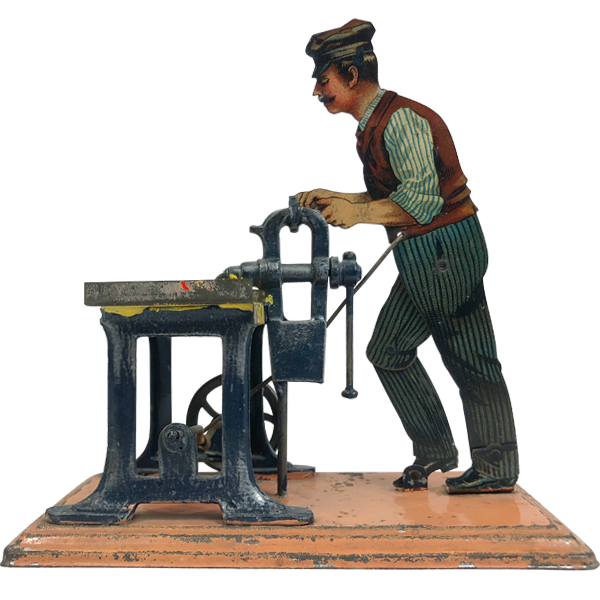
- DE
- EN
- FR


Our tip in advance: You can also look at this showcase later if it is too busy at the moment. You will pass by here again on your way back. You can also listen to this audio guide for Station 2 in the Steam Engines section.
Handicrafts in the nursery
The fathers' profession were often reflected in their children's toys. Whether baker, butcher or blacksmith, the toys often showed the craftsmanship of the parents. And then as now, children were fascinated by everything that moved, was colourful and made sounds.
The toys you see here show equipment such as lathes, punching machines, drills, grinders and saws. There are models from agriculture such as the butter machine and the threshing machine, but also rare pieces such as a printing press. Mills and scooping machines were very popular.
The machines were driven by steam engines, hot air engines or electric motors. Through transmission (where the power of one drive system is transferred to several machines), several models could be operated simultaneously with one drive.
For many of the machines were functional, others were an abstract representation of function. The models were made of sheet metal, iron, wood and glass: unlike today, no plastics were used. Many were painted by hand, others were coloured by lithography, i.e. tin printing. The figures were initially depicted two-dimensionally with perspective lithography. Later, three-dimensional representation using pressed sheet metal predominated.
Many of the pieces were system toys that could be expanded - similar to many of today's toys.
Then as now, with a little patience and the right purse, entire play worlds can be created.